Photographing the weather
Categories: Nature | Photo School
By Pictolic https://pictolic.com/article/photographing-the-weather.htmlCotton Coulson (1952 — 2015) was a journalist and photographer for National Geographic Traveler. This man was a real master of "weather" shooting, and his advice in photographing the weather can significantly improve your landscape and street photos.
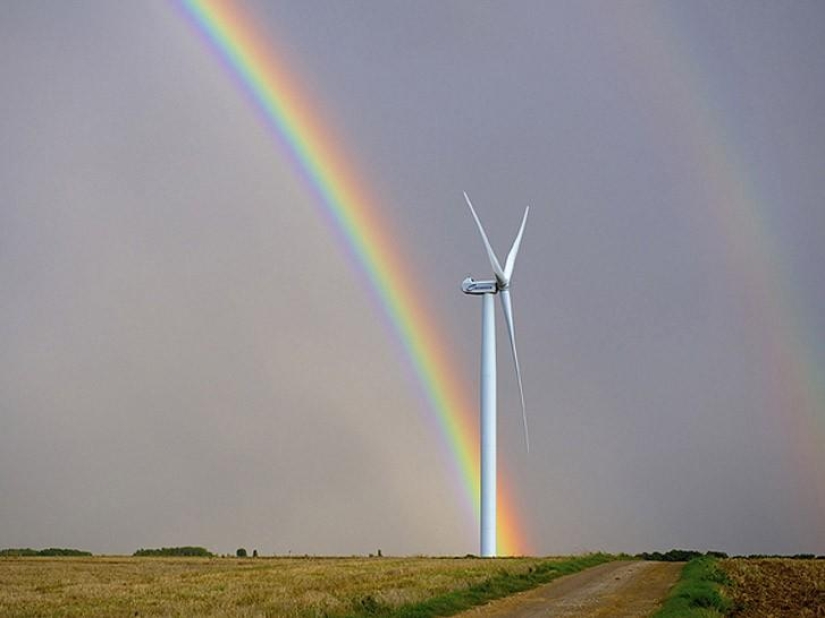
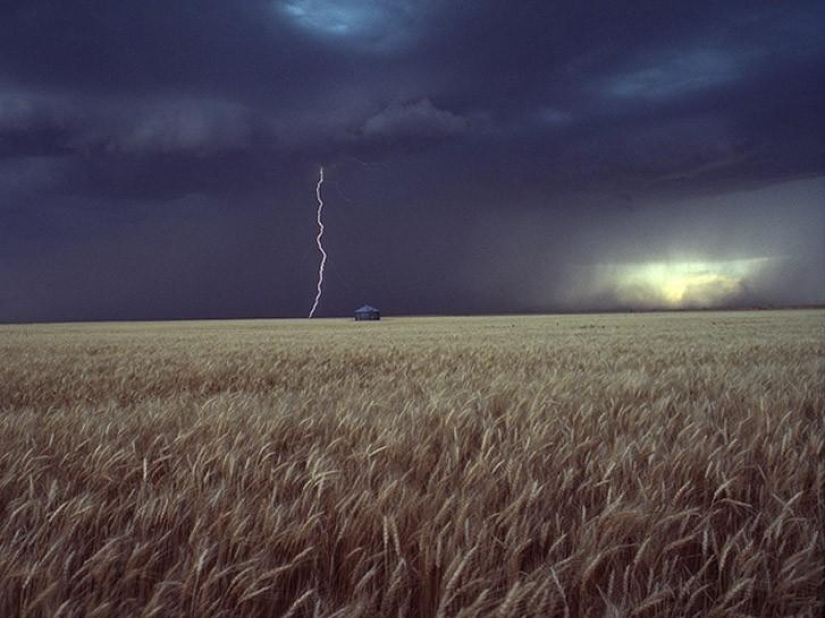
This photo taken in Kansas, was one of many that I shot for a magazine article for a month. But in the end, she became the main picture. When you photograph thunderstorms and lightning, you never know at what moment it will happen, so you need to be patient and hope for luck.
In order to remove the zipper well, you need to install the camera on a tripod by switching to manual mode. You can turn on the mirror lock or use the trigger cable to minimize camera shake. Set the aperture number to 8 or 11 to provide an exposure of 5 to 30 seconds, and get ready to wait for lightning to appear. Since we don't know when and where exactly the sky will light up with a flash, I recommend using the "infinity" focus mode and including a large volume of the sky in the composition. When I was taking this photo, a thunderstorm struck at the end of the day, and the lightning stood out spectacularly against the dark and ominous clouds.
And one last piece of advice: for safety reasons, do not stand under trees or near metal supports.
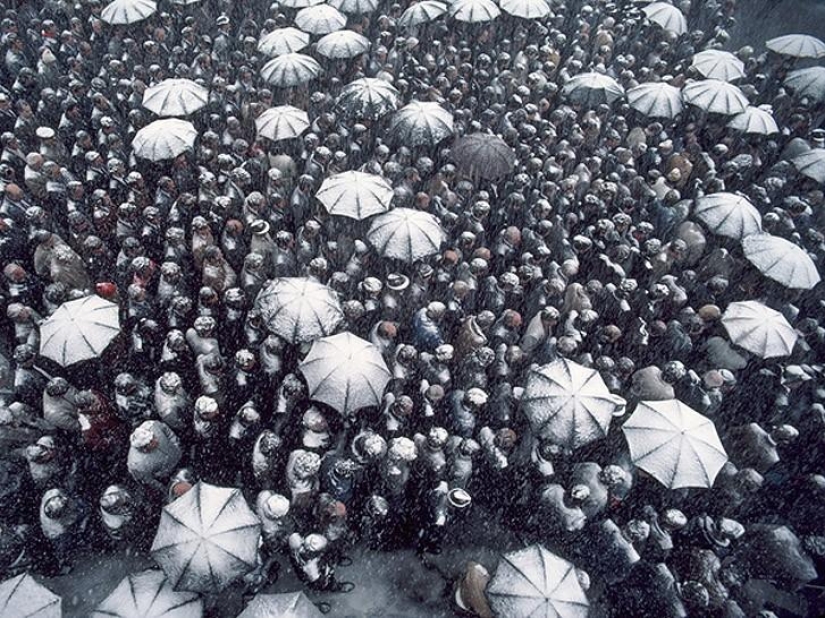
When I was preparing a piece on democracy in Switzerland, I found myself in the small town of Appenzell: there I had to shoot how citizens exercise their right to vote. Citizens gather in the city center in the morning to learn about upcoming changes in legislation, and then they vote directly in the open air, raising their hands in case of consent.
It will be much easier to see the snowflakes when you find a dark background as opposed to white. This picture shows one of the wonderful moments when Mother Nature herself helped me. Starting the photo shoot in the morning, I did not expect a change in the weather, but when it snowed, I immediately appreciated its advantages, climbed higher up the stairs and was able to shoot the scene from above. Umbrellas create a strong visual effect here (and in many other cases). There is something to think about the next time you shoot in a snowfall!
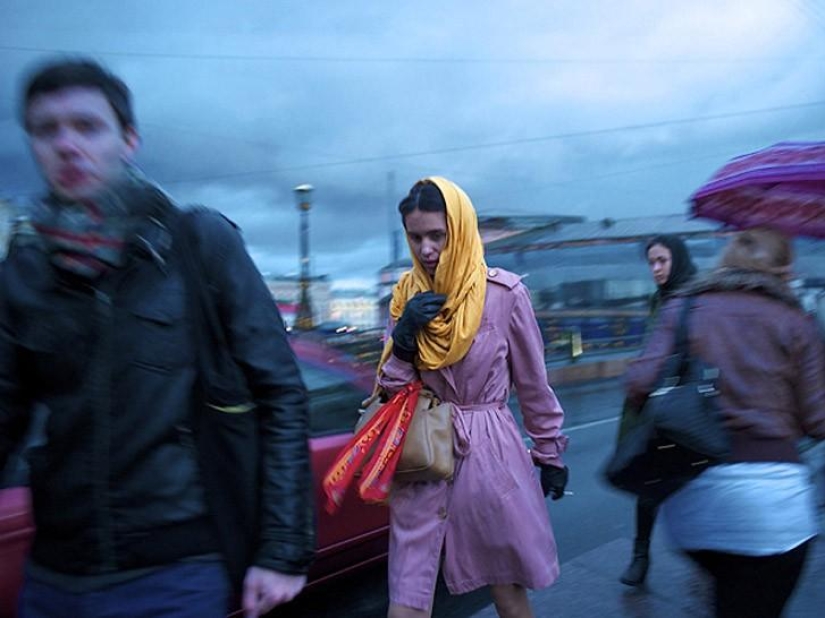
Working recently in In St. Petersburg, I wanted to convey through photography the energy and brightness of St. Petersburg youth. I was walking along the Fontanka River embankment in the rainy twilight when this brightly dressed young woman walked past me.
During the rain, I always wear large-sized clothes made of waterproof fabric, under which the equipment remains dry and at the same time ready to shoot at the first opportunity. Do not change the lenses: instead, use protective UV filters and a lens hood. In addition, always have a clean soft cloth with you to dry the lens in case moisture gets on it. It will not hurt to have a plastic bag — it will save the equipment if you find yourself under a heavy downpour. Also look for a closed place on the street: an arch or an awning so that you can safely take pictures in the rain.
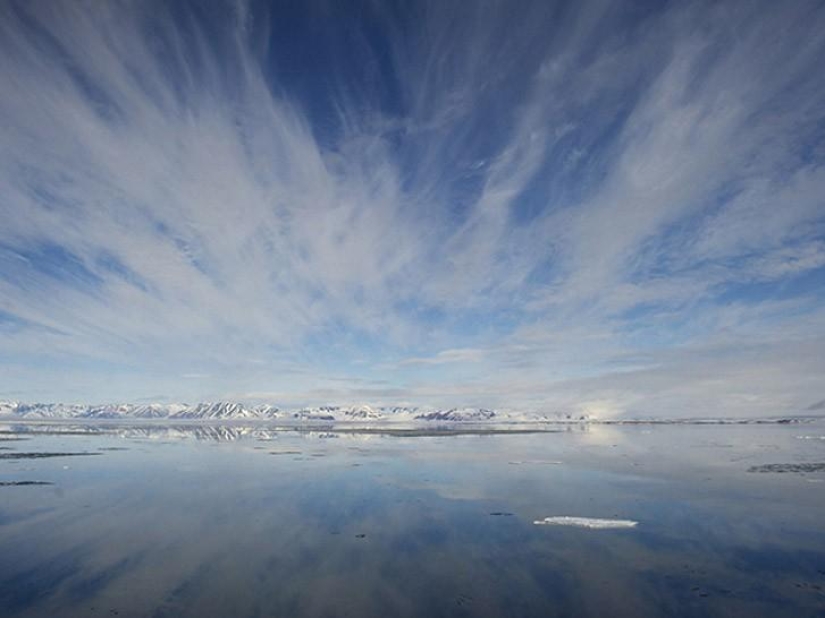
You can take a great photo even in the middle of the day: the main thing is that all the elements of the photo come together. Sometimes the wind subsides in Norwegian Svalbard, and the fjords become a mirror image of the sky. I usually like to shoot early in the morning or late in the evening when the sun is low above the horizon, giving a warm light. But this picture turned out well, despite the bright daytime sun, including thanks to clouds and their reflection in the water.
Pay special attention to the alignment of the horizon, as well as the composition. The new cameras have built-in display viewfinder grids that help in leveling the horizontal line. In this photo, I didn't use any filters to increase the contrast and color of the sky against thin white clouds. My main efforts were focused on building the composition: on deciding how much space should be allocated under calm water and a sky with clouds. A small fragment of ice floating in the water adds an additional aspect and layer to the image in the composition. Always pay attention to the various surrounding objects: they can be advantageously added to the foreground.
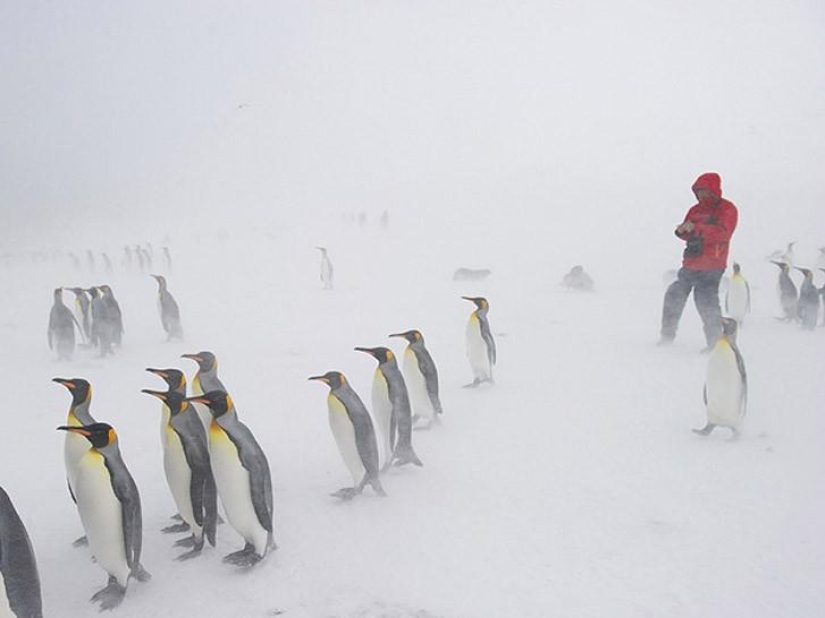
Blizzard and snowstorm are probably the most difficult weather conditions for photographing. When I was on the island of South Georgia, a wind suddenly blew from the mountains, and a blizzard charged with such force that my eyes hurt.
I don't like to shoot with glasses: as a rule, this is very inconvenient, but in this situation they provided the necessary protection. In snow and blizzard, you will also need warm gloves, but they prevent you from working with small buttons and a scale of settings. I found very thin gloves made of lining fabric; I also wear a buff, which allows me to protect my nose from contact with the frozen camera body and viewfinder and at the same time does not particularly interfere with breathing.
Bright snow may present a certain difficulty when shooting in winter. The camera's built-in exposure meters are calibrated based on the brightness of light that could be reflected from a neutral gray surface. But since the snow is actually brighter, I make an exposure adjustment in plus so that the snow turns out to be lighter.
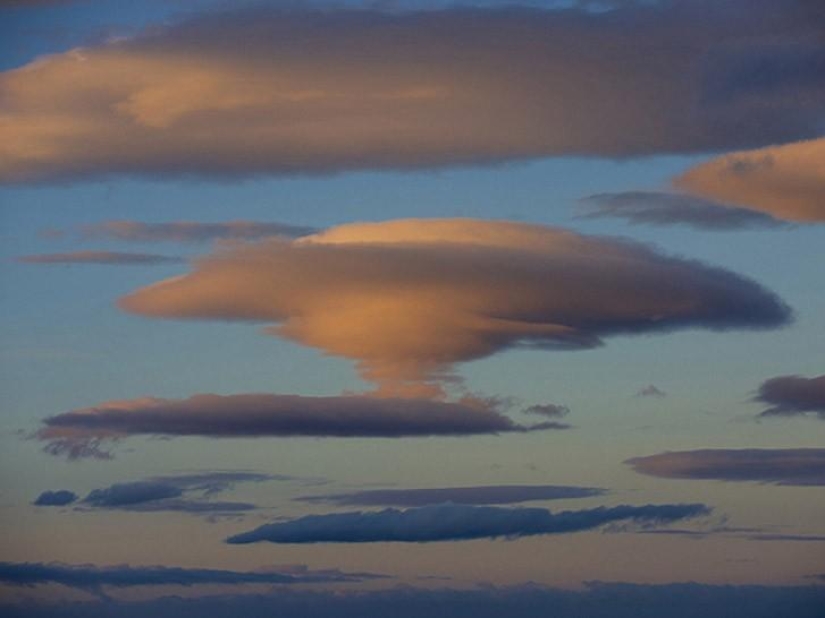
These clouds in Antarctica were filmed at the moment when the sun sets, the shadows become long, and the light acquires a golden hue. Taking pictures of the sky, it makes sense to look closely at the clouds and find interesting shapes. In this photo, you can see how low illumination forms shadows and contours of clouds, creating an unusual composition. The sun's rays no longer fall on the lower clouds, which gives the image a special depth. Keep in mind that at sunset the colors are the brightest.
Despite the fact that there is not enough light, a tripod is not needed for this kind of photos, since the object is at an "infinite distance". Therefore, you can shoot with an aperture number of about 4.5, and all objects will remain in focus. At the same time, you can hold the camera in your hands, since the shutter speed will be quite short.
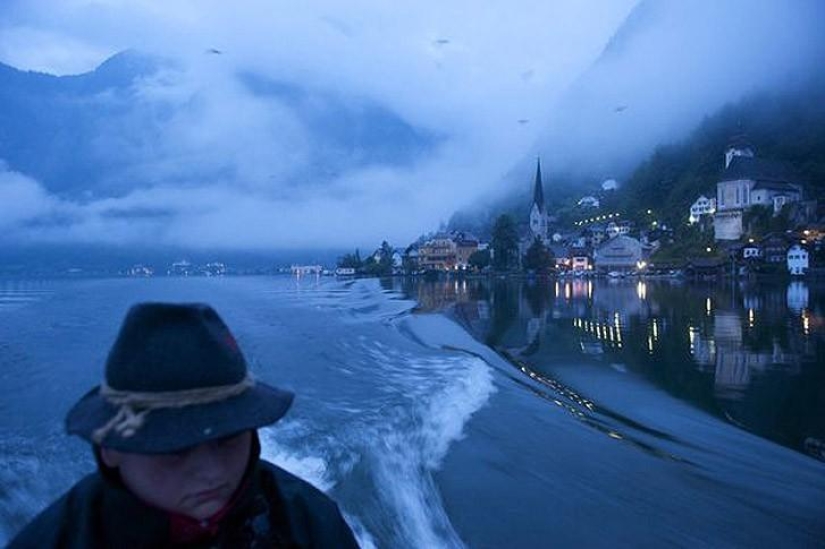
I really like to shoot the weather before sunrise, especially if there is smog and morning fog: these elements add mood and mystery to the photos.
If I need to get up early in the morning, I prepare everything possible the night before. Before you go to the morning shoot, check out the two most important things: these are fully charged batteries and spare memory cards. It also does not hurt to check the ISO settings and their compliance with the coming day.
During the work on this frame, there was very little daylight. By setting the ISO to 3200, I knew I could capture and transmit the movement of a fishing boat. The latest cameras make it possible to set such parameters for ISO without making the picture "noisy". Since I always shoot in RAW, I usually leave the white balance automatic. Subsequently, this can always be corrected using a number of programs, such as Apple's Aperture, Adobe, Lightroom or Google's Picasa.
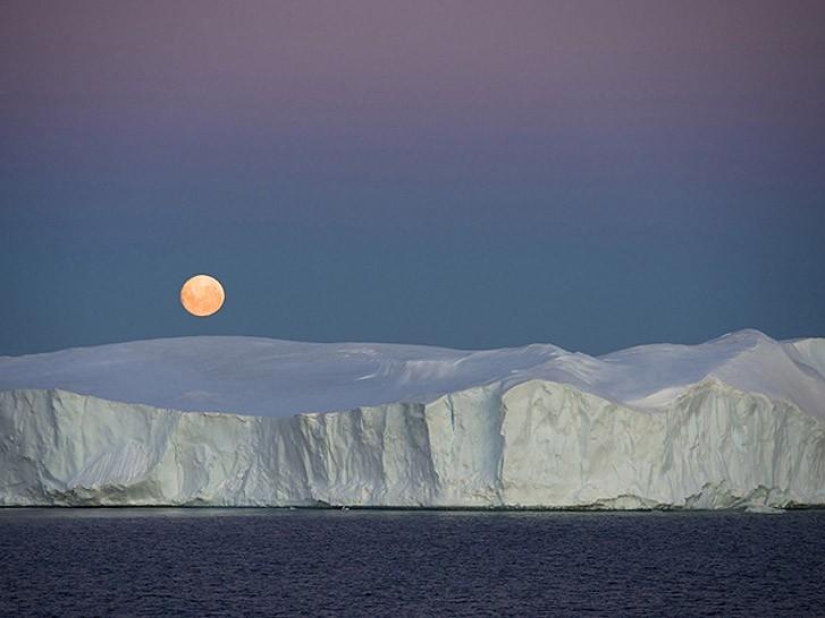
Having had the opportunity to spend several seasons in Antarctica with the National Geographic expedition, I was able to take pictures of beautiful icebergs during the regime time, when after sunset the sky is filled with colors from pink to purple. In this photo, the full moon rises above a relief iceberg, creating the center of the composition.
The best weather conditions for shooting in regime time are clear skies and no clouds. Half an hour after sunset, with the camera mounted on a tripod, take a picture of the moon at the moment when it is above the horizon: this will save the main details. Very often I use the shutter speed bracketing mode: first I take a frame with the shutter speed set automatically, then with a shutter speed one step lower and one step higher. This allowed us to capture the moment when the illumination of the iceberg, the light of the moon and the sky perfectly harmonize with each other. This moment doesn't last long.
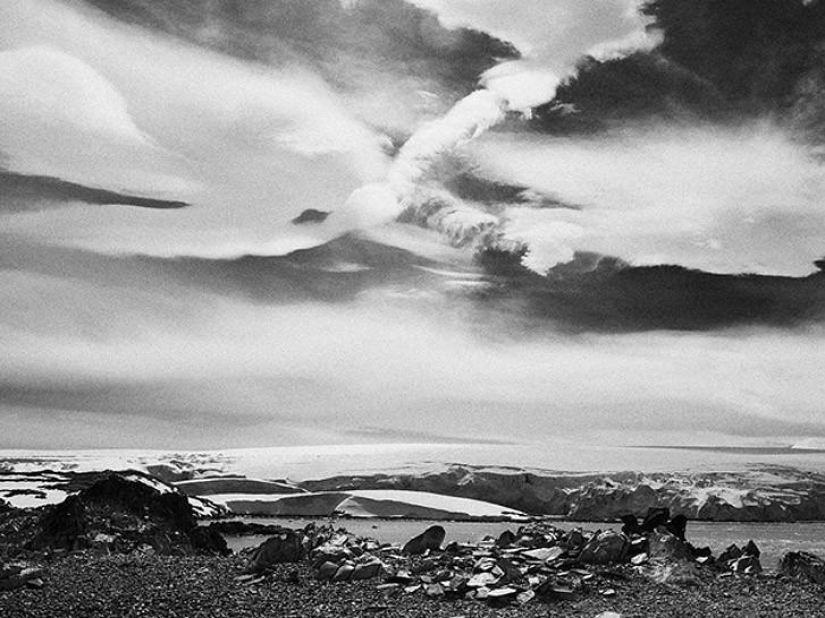
In polar regions, the sky is constantly changing, and when I work in such places, I take with me a high-quality polarizing light filter that reduces atmospheric haze and glare from ice, snow and water, while increasing the contrast between the sky and clouds. Polarizing filters can be used for both color and black-and-white photography. I believe that black and white photography often creates a sense of timelessness, while color photographs are associated with modernity. Black-and-white shooting allows you not to be distracted by shades of color, focusing instead on the details.
Keep in mind that when using a polarizing filter, the image in the viewfinder will be darker, since filters reduce the total amount of light entering the lens. Remember: polarizing filters are most effective when the camera's line of sight is perpendicular to sunlight, and they are virtually useless if the sun is directly behind you. If you are going to buy a polarizing filter, make sure that it is made of high-quality glass. And if you shoot scenes with water, the glare from the surface will be minimal, which will allow you to see the maximum details below.
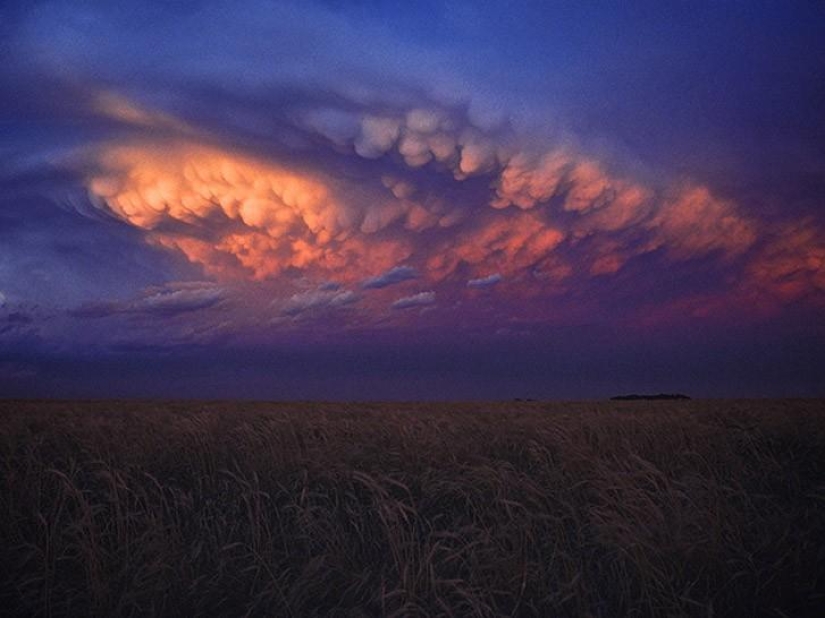
For a photographer, one of the most difficult skills to learn is patience, especially after you've taken an amazing picture. A completely natural next impulse is to assemble the camera and tripod, moving on to a new situation. This happens when shooting both people and landscapes. However, try to force yourself to stay in place and capture any other unexpected moments of this scene. This photo perfectly illustrates the advice: my patience was rewarded when I stayed to film the weather changes after a thunderstorm passed here.
Taking pictures of the weather and landscapes, I force myself to calmly observe the changes in light and environment. This is one of the main points in the quality work of a professional photographer.
I made sure that I had properly captured the sunlit clouds. In my experience, depending on the camera used, sometimes it is better to underexpose the image. In this case, I used bracketing and at a shutter speed, one position less than the standard one, I got the cloud illumination level I needed.

The light changes constantly, and the best time to feel and convey this during a thunderstorm is the moment when the sun breaks through the clouds and shines through the rain. Then you can see the rainbow, which always makes the landscape amazing. In this picture taken in the north of France, the rainbow draws attention to the main theme — a modern wind turbine. At the time of shooting this shot, I was walking along the road and could accurately compose the composition so that the turbine and the rainbow "grew" from one point.
Photographing a rainbow as such is quite banal. Any situation, a story told through interesting elements in the composition, will make a photo really interesting - only then shooting a rainbow will make sense. For these cases, have a polarizing filter with you: it allows you to capture all the colors of the rainbow.
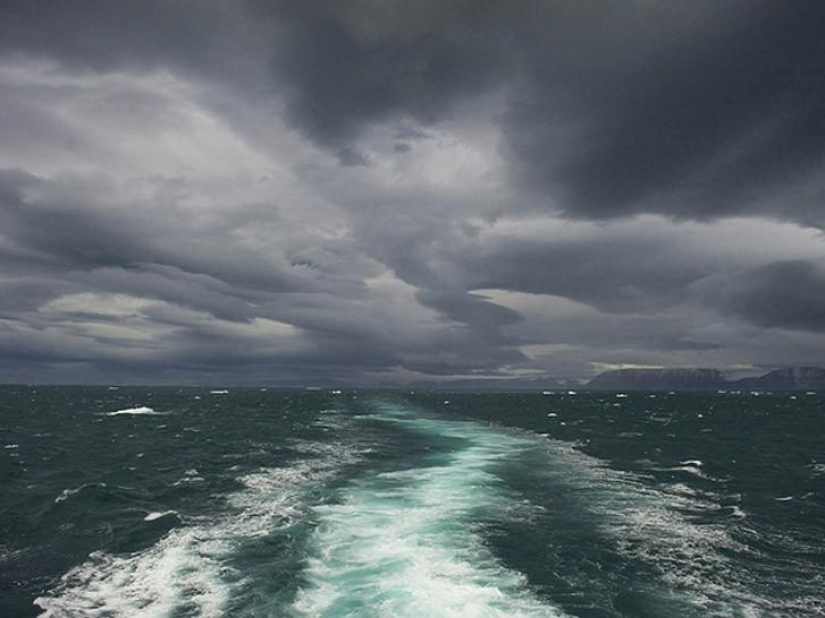
When shooting in harsh weather conditions, you need to think about the protection for the equipment. For example, when you are on a ship, the camera and lenses need to be protected from wind and salt water splashes. There are a lot of available devices specially designed for each model of camera and lens, and they are really able to protect the equipment from the negative effects of the weather.
If salt water accidentally gets on the camera, quickly wipe it with a cloth moistened with fresh water to help remove salt and salt splashes. The rain-soaked equipment will help dry the hair dryer, set to the weakest mode.
When filming the weather from a moving vessel, be sure to find a place that is as protected from wind and spray as possible: this will not only save the equipment, but also allow you to keep the camera stationary. And never let bad weather disrupt your photography plans!
Recent articles

We present you a selection of amazing beaches — but today these are not standard holiday destinations, but really unusual places. ...

Aerial photographer cronista johnny Miller demonstrate dramatically the gap between rich and poor in cities of South Africa, Mexico ...

On April 22, 1923, Bettie Page was born in Nashville, who became a sex symbol throughout the country in the middle of the century. ...